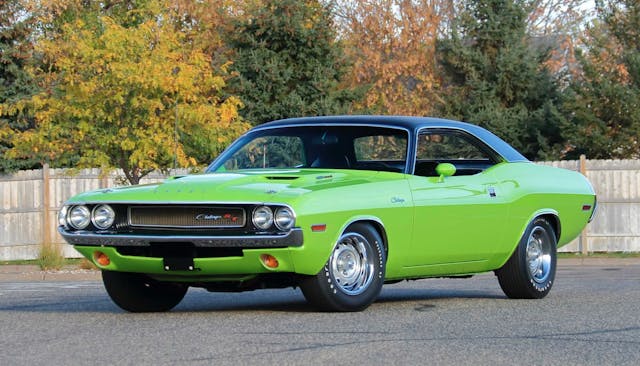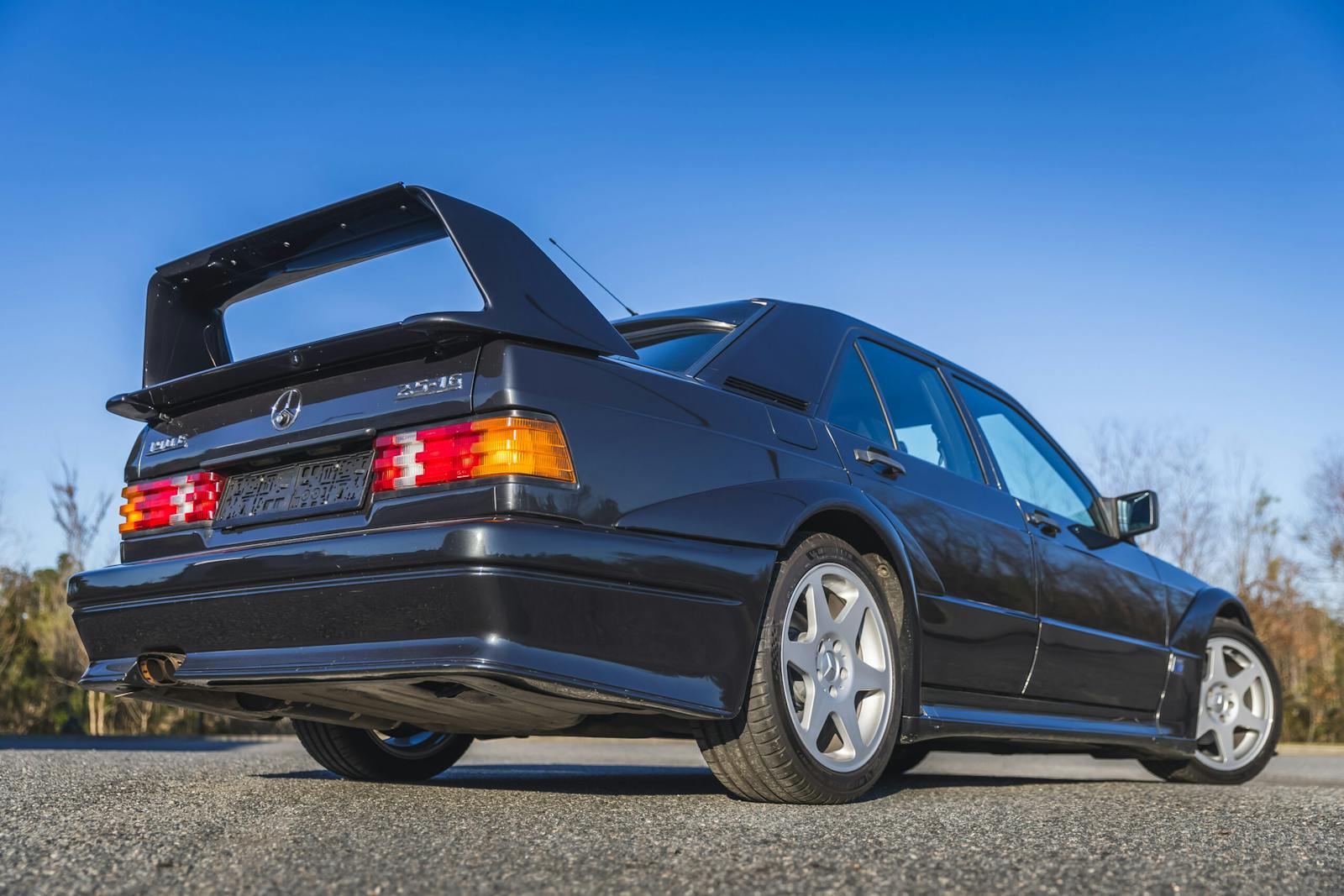Who made the most coveted muscle cars? Values suggest a victor
Peak Muscle. 1968 to 1972. Muscle cars were honed in stoplight drags on streets and strips across America. The fastest car won. Manufacturers were in on it, too: Each competed to outdo its cross-town rivals and corporate cousins. Enthusiasts then and now have debated who fielded the strongest muscle cars during this golden age.
Of course, car to car, the easiest way to find an answer is to line them up at a drag strip. Yet the conversation gets more complicated when you try to determine which manufacturer “won” the muscle car wars.
Does the highest average horsepower win? Possibly, except many cars had underrated horsepower back then. What about the highest production numbers? If small-displacement Mustangs far outnumber COPO Camaros, what does that tell us? Not much. Besides, these numbers fail to take into account the legacy of these cars—what they mean to enthusiasts.
Another solution: Study values in the collector car market to determine an overall “winner.”
The Hagerty Price Guide has more than 1900 vehicle-body-engine combinations for cars built by the Big Three for the model years 1968 through 1972. Since we’re talking about muscle cars, we zoomed in on two-door cars with V-8s. No convertibles.
Next, we lined up model years and market segments to avoid apples-to-oranges comparisons. For 1968, for instance, we compared values of the Dodge Dart to those of Plymouth Valiant, Chevrolet Nova, Ford Falcon, and Mercury Comet. We also aligned the trim levels for those, so the ’70 Charger R/T is compared to the 1970 models of the GTX, Chevelle SS 454, Buick GSX, GTO Judge, Torino Cobra, Cyclone GT, and 4-4-2 W-30. All combined, we use 26 groups of models, trims, and model years.
For each of those 26 groups, we find the most valuable vehicle from each make and rank the entries accordingly. For example, in group 6, which has the 1968 Plymouth Barracuda, 1968 Chevrolet Camaro, 1968 Pontiac Firebird, 1968 Ford Mustang, 1968 Mercury Cougar, and 1968 Shelby GT350, the Camaro is ranked first with the COPO, Pontiac second with the Ram Air II, and Ford third with the 428-cubic-inch Cobra Jet in the Mustang Fastback GT.
Finally, we averaged those ranks across all 26 groups to determine the manufacturer with the highest average.
By this specific analysis, Dodge has the most sought-after muscle cars, with an average ranking between second and third in each group. Chevrolet is just a little behind, with a ranking closer to third than second. Plymouth, Pontiac, Shelby, Oldsmobile, Ford, Mercury, and Buick follow those in that order.
The Mopar fans in the audience surely need no more convincing. For everyone else, a few rationales exist for Dodge’s high ranking. First, VINs. They’re not as sexy sounding as Hemis or as eye-catching as the High Impact colors, but the fact that Dodge had decodable, accurate identification numbers long before this became industry-wide practice is an important factor in why they tend to fetch more money. It means the bidder on, say, a 1970 Charger R/T can be sure the car in question really came from the factory with a 440 Six Pack and a four-speed manual.
Other things to consider are the sheer range of colors and options and smaller production numbers overall. Also, Dodge has a wide range of (currently) sought-after models, with the Challenger and Charger ranking well, but also the Dart and Coronet.

Dodge also benefits from being late to the pony car game. The Challenger debuted in 1970, and thus ducks the heavyweight slugfest of the 1969 Ford Mustang Boss 429 and 1969 Chevrolet Camaro COPO (the 1969 Plymouth Barracuda 440 was around and placed third).
Note we’re talking highest average ranking. Dodge doesn’t win everywhere. The 1969 Dodge Charger R/T, for instance, is second in price guide value to the 1969 Pontiac GTO Judge, while just behind those two is the 1969 Chevrolet Chevelle Malibu SS 396. Also note these rankings are based on current price guide values as of this writing. In another year with different valuations and evolving consumer interest, the crown could easily go to another manufacturer.
One more critical caveat: This is all in good fun. No metric—not dollars nor horsepower nor even quarter mile times—can possibly quantify the passion (and partisanship) people feel toward muscle cars. On that note, we’d love to hear what you think in the comments. And if you’re the sort who likes to read footnotes, you can peruse all the groups we used to determine our rankings, below.
Check out the Hagerty Media homepage so you don’t miss a single story, or better yet, bookmark it.



I am happy to be of the late baby boomer generation., would not trade it for a thing. I feel the new generation is not into the cars as we all were, just hope it’s not lost.
My memory said muscle began in 1962 when bucket seats/ consoles/floor shifts & positraction were all the rage! Chevy introduced the Impala “SS” 409 & Ford the Galaxie XL 406. Then in 1963 & afterwards, when the 427 big blocks came out, things really ramped up, both on the street & strip!!!!!!!!!!
This is a very poor analysis. “The most coveted” “The most valuable” Basing these metrics on average value per example? Very weak thought process. Sure, mopars are going to be the highest value per unit since so few were made = since so few were wanted or “coveted” by the buying public when new. Here’s another way to measure “most coveted”; how about total market value of all examples? Total market capitalization of an individual model per year would show overall market “covetedness” in total. Compare these numbers and you’ll find the same answer that existed when these cars were new, the buying public as a whole puts far more money into the Chevys/Fords/etc. (popular models) now as they did back when.
I DON’T KNOW ABOUT ANY STANGS OR MAROS BUT MY 68 JAVELIN W/ 390 WAS PRETTY HOT STUFF
AND AM KINDA UPSET THAT YOU DIDN’T EVEN INCLUDE THEM WHEN YOU INCLUDED THE SLANT 6
DART AND VALIANT THAT’S JUST INEXCUSABLE !!!
Another thing to gleam from this: Typically The least expensive brands new are worth the most now, and the brands that would typically be the upper end new are worth the least. With the exception of Ford.
’69 440 Charger not quick or fast?
OK Hal, I can see your point. Not the smallest/lightest car in the world, but there was a lot to work with in those old beauties though.
Tell them about how you eventually graduated to an SPF MK3 roadster and how you regularly would go out and flog the Porsches on the tracks all across the Carolinas…
Oh wait, are you still driving a Porsche now Hal?
😉
Guess who?
As always, great to hear from you!!!
Good article just as is, goal accomplished, reread the last paragraph which eludes to the passion- thus the comments and the first 2 words Peak Muscle. Watched the History channel over the weekend on the Cars that built America. I have never been a Mopar fan. The Dodge brothers really deserve a place in automotive history. When growing up you were GM, Ford, Mopar and then all others. We seldom crossed lines and that pretty much holds true for life. Kind of funny as this is in many ways subjective. The marketing and association to brands was something the automotive industry understand sold cars and then the racing on Sunday-Sales on Monday factored as well.
Muscle cars began in 1964 with the Pontiac GTO. The real end began on February 1, 1970, when the Insurance companies provide us with a 100% increase in premiums. I owned a 69′ Mustang 428 4 speed which was sold shortly after the crap rate increase. You could buy any used muscle car in February of 70′ for $1500 including Corvettes.
That spreadsheet at the bottom is not working correctly, is there a download available or can it be fixed? The scroll/slider doesn’t work on page 1 and ends at group 8 and if you go to page 2 it starts at group 21.
Had a 69 Nova, 396 / 375 Horse back in the day. I beat a lot of cars off the line but couldn’t hold my own
Top end on the highway. Worst turbo Hydromatic in the world. Dealer repaired it twice. And finally replaced it
on the third try. Sold it and the kid who bought it hit a tree and totaled it. Best thing that ever happened to that car.
I believe you all are missing the boat on when muscle cars were first on the scene. It was way before 1964. There was nothing more muscular than the 413 Max wedge in the 1962 Plymouth and Dodges. They gave all the GTO’S, Ford’s and Chevys a run for their money
Your Right ! That’s where the saying “She eats Goats, Mustangs and Impala’s for Lunch” came from….They were soooooo..and still are….plentiful
Great article. Thanks for publishing. However, I think your research (or at least your conclusions) could go just a bit further. If you were to also layer on total sales of the cars over, say, the last 5 years, then I think you’d get a better picture of what “coveted” really means. Price alone is not the only thing that speaks to the term. Volume of transactions has a contribution to make (i.e. number of Coveters). And, it might help to neutralize the obvious skew caused by supply/demand – we all know the Mopar muscle cars were sold in smaller volumes back in the day.
The first muscle car I had experience with was a ’61 Chevrolet Biscayne 2 door with a tri power 348 and a 4.88 posi behind a T10 four speed. Drive train was fragile, but it still ran mid 12’s thru the mufflers, when it didn’t break. He held it pretty close. Helms Bakery, Hawthorne on ramp, Terminal Island, Alameda, LA riverbed. Et’s are extrapolated from those he beat as he had enough sense not to wring it out in public.
It belonged to an “old guy”, must have been all of 50. Bachelor who knew what he wanted to do. Oh, that I should have been so wise. He beat me when I was running 12.10’s heads up race.
Being the owner of six 1964 GTO’S over the years i agree you have missed the original muscle car era. Also no mention of the 1966 & 1967 Chevy Nova which always could beat the Hemi’s at the drags.
The lineup of Dodge and Plymouth is not really how the Mopar market sees it. Coronet R/T lines up with the Plymouth GTX and the Super Bee lines up with Road Runner. The Charger R/T stands alone.